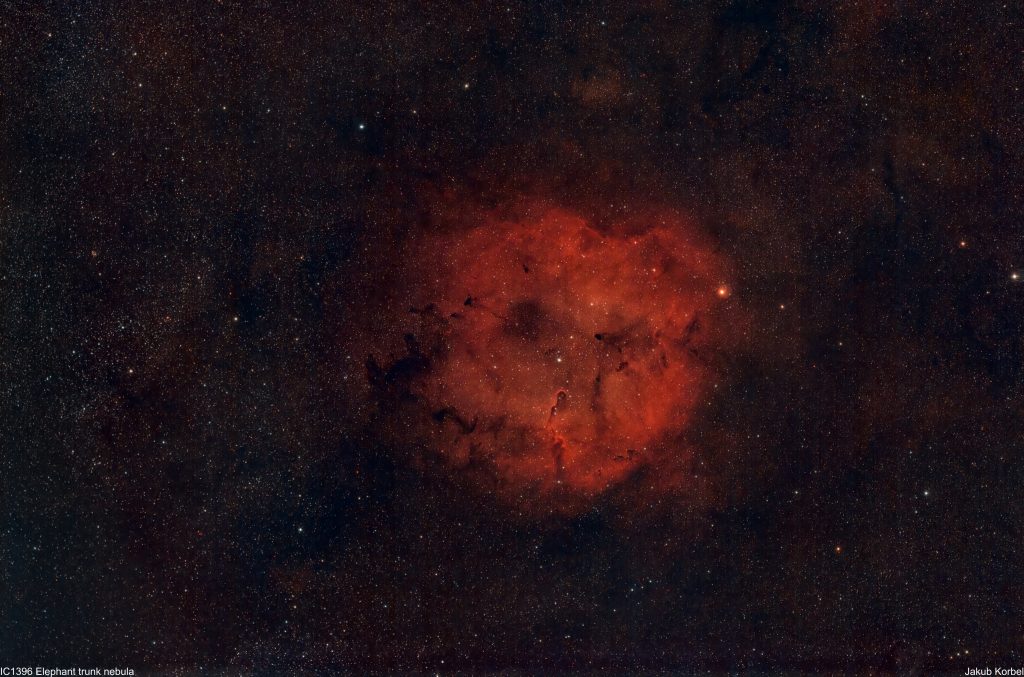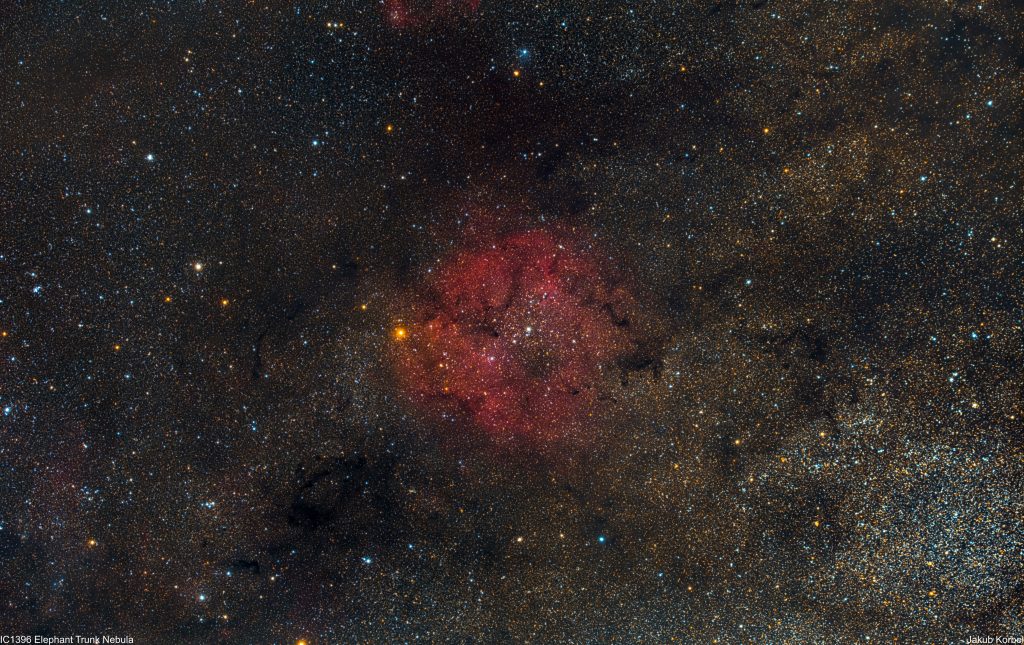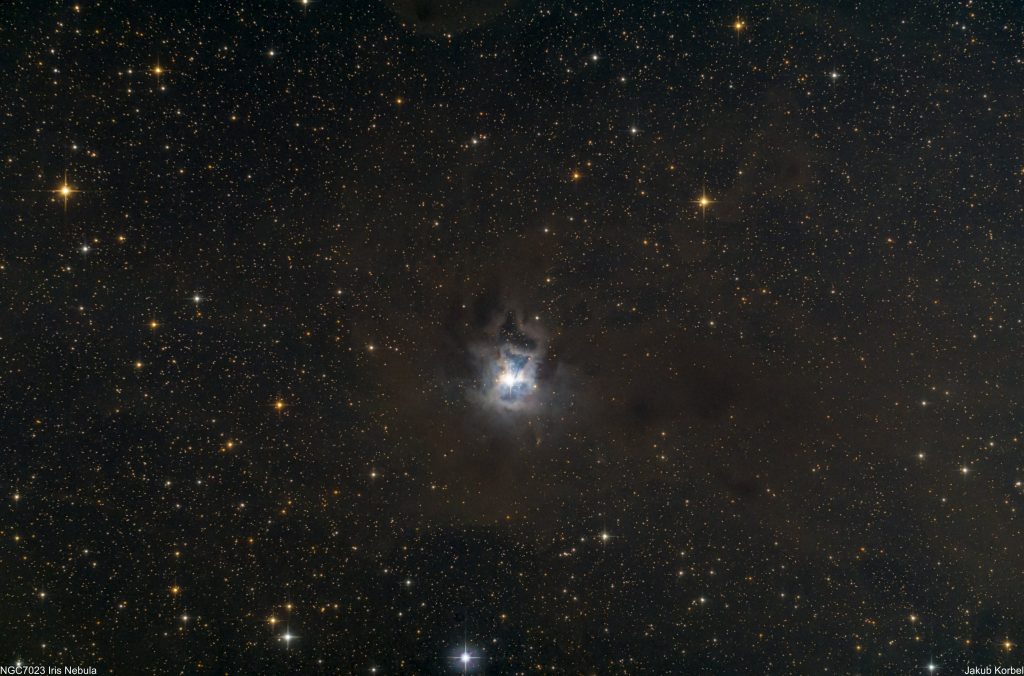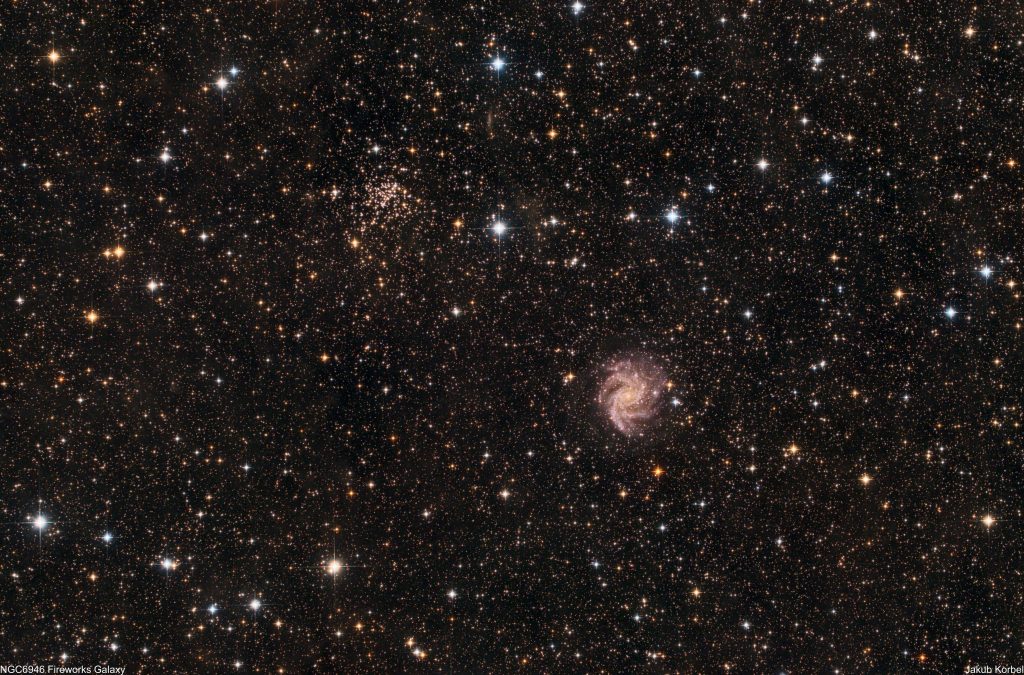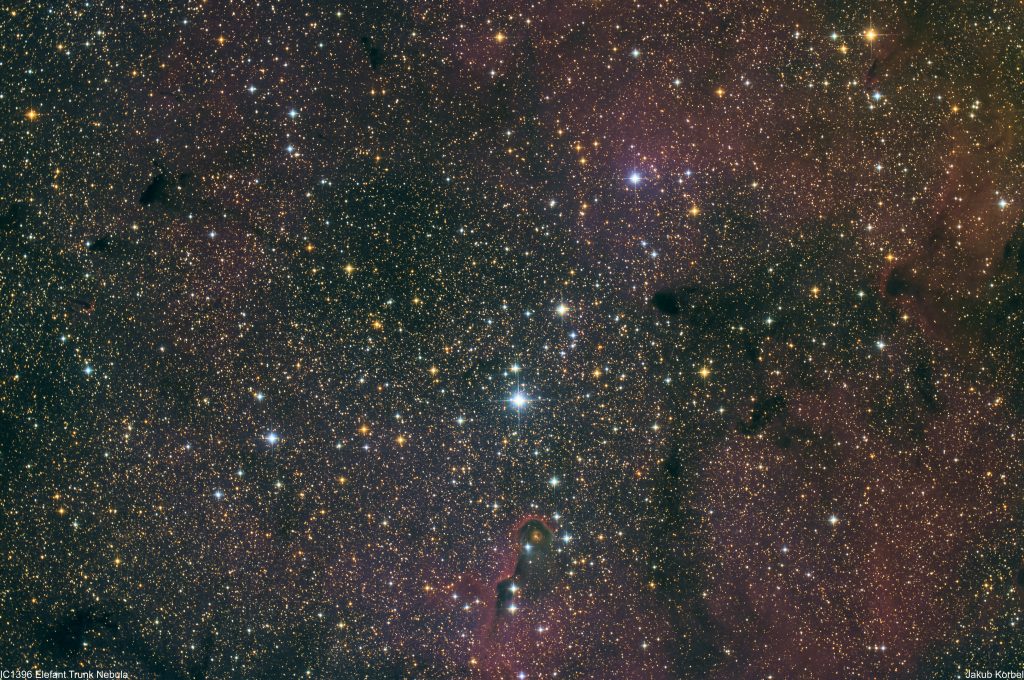Elephant Trunk Nebula is my favorite nebula in the constellation Cepheus. I photographed it many times using many different telescopes. The focal length was either too short or too long. Now I tried a focal length of 414 mm and an APS-C sensor, to frame it. I photographed this nebula for two nights, the total integration time is nearly 11 hours.
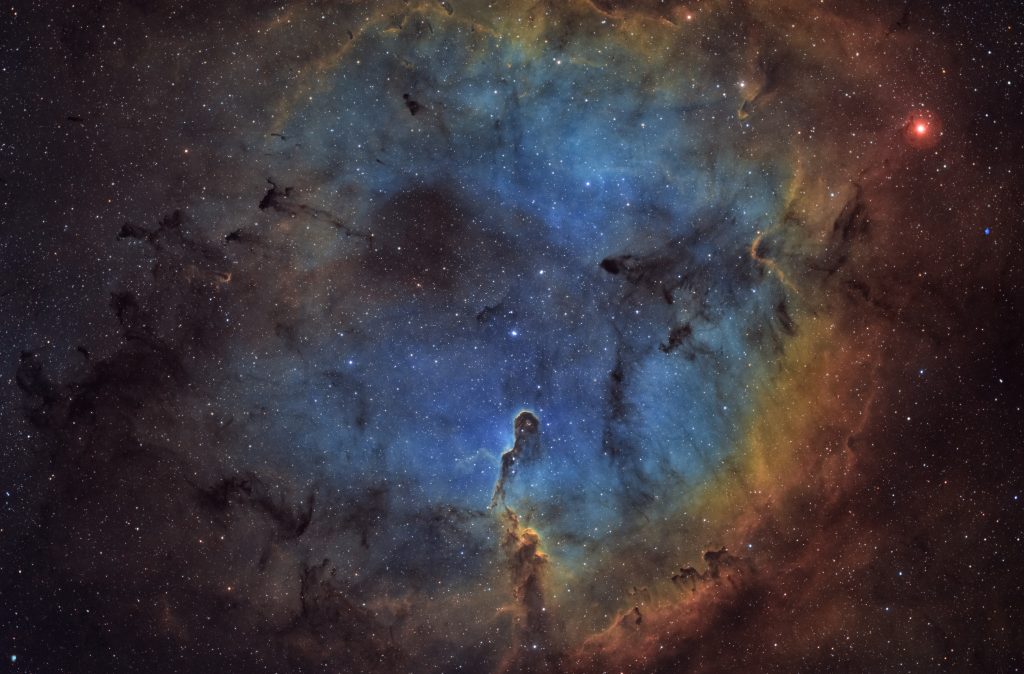
And here are the stars processed out:
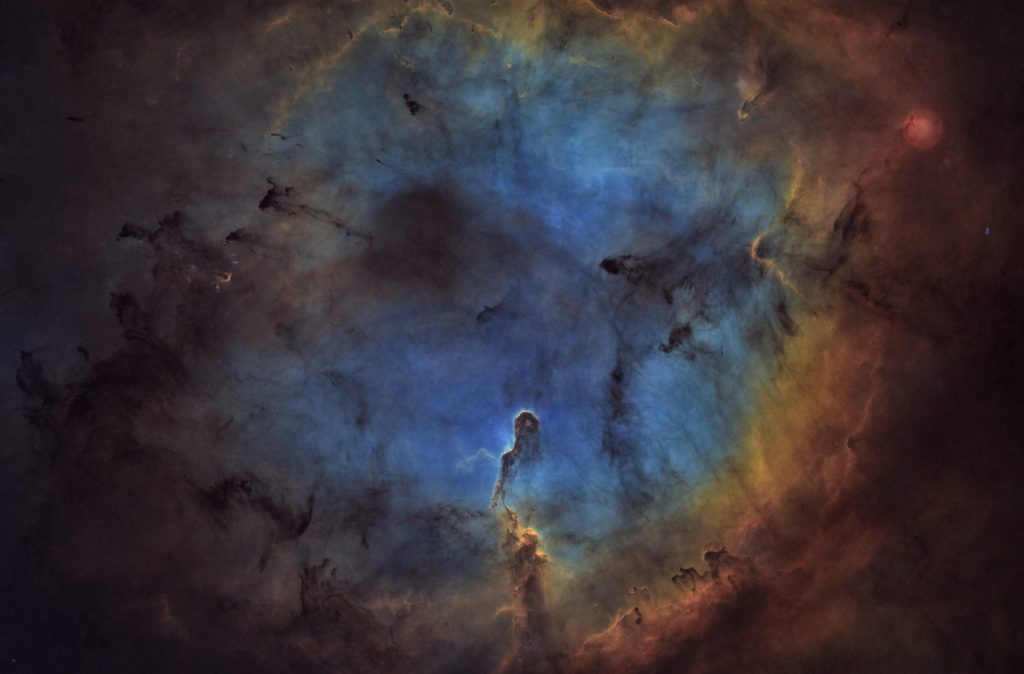
| Telescope | Sharpstar 94EDPH |
| Aperture | 94 mm |
| Focal length | 414 mm |
| Mount | Rainbow Astro RST 135 |
| Autoguiding | ZWO 174MM, QHY Mini Guide Scope |
| Camera | ZWO 2600MM @-10°C |
| Corrector | F4.4 Quad Reducer |
| Filters | Antlia Ha, OIII, SII 3 nm |
| Exposure | 129x300s, Gain 100, bin 1x1, |
| Date | 2022-10-05 |

